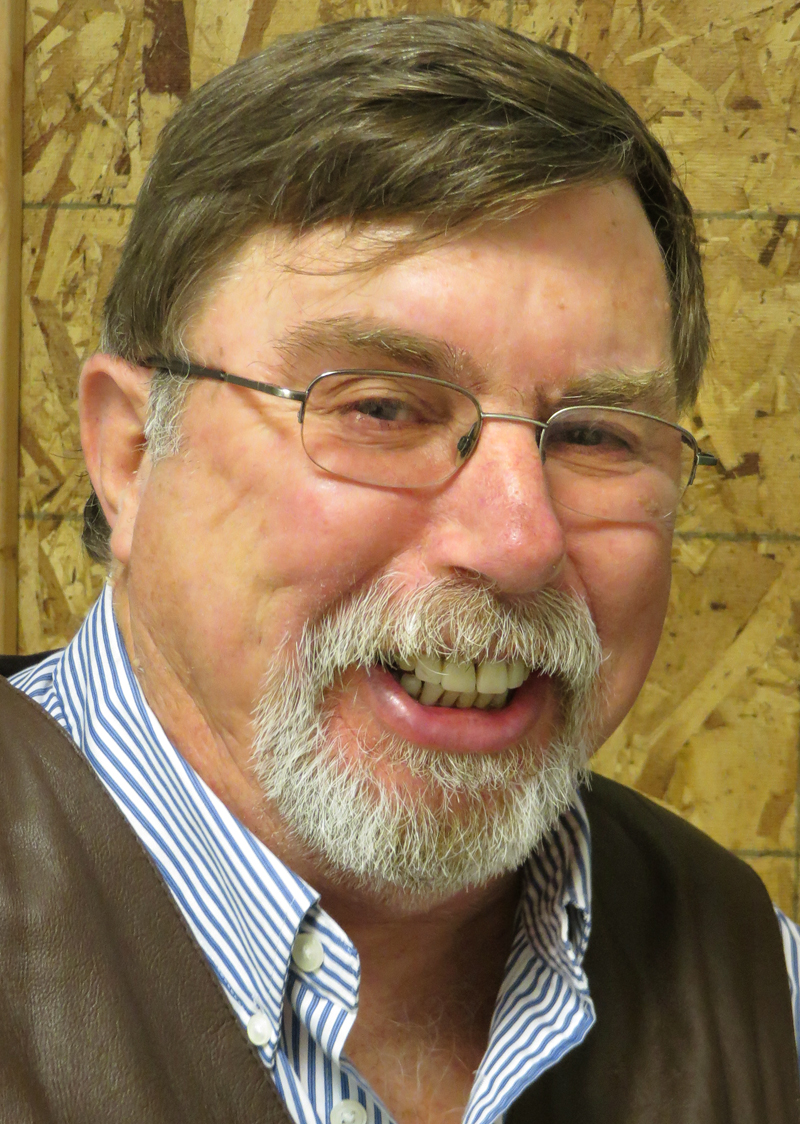By Darryl Manzer
"Way Back When"
The Signal
Sunday, October 1, 2006
Pearl Harbor, Hawaii — All this time I thought I was unemployable, and all of a sudden, I'm working again. Not just writing books and this column, but working in a real, live submarine engineering position. I was just about ready to have a T-shirt made that said, "Will fix nuclear submarines for food."
Darryl Manzer grew up in the Pico Canyon oil town of Mentryville in the 1960s and attended Hart High School. After a career in the U.S. Navy he returned to live in the Santa Clarita Valley and eventually relocated to Boulder City, Nev. He can be reached at dmanzer@scvhistory.com. His older commentaries are archived at DManzer.com; his newer commentaries can be accessed [here]. Watch his walking tour of Mentryville [here].
So this new job gets me out on the road again. They call it "part time, on call," but from my current perspective, I'd call it full-time.
You see, the project I'm working on was designed by folks who thought something could be made to be "sailor proof."
Nothing can or ever will be that.
A whole bunch of young engineers got together and thought they could accomplish the impossible. Engineering failed again in the battle against the sailor. So now they've hired me to figure out how to make it "sailor resistant." Nearly impossible — but it can be done.
Of course, one of the perks of the new job is a trip or two to Hawaii. Not that I've left anything here that I wanted to get back again. Paradise isn't what it used to be. Honolulu looks like downtown Los Angeles. Highrise buildings everywhere and people and traffic and — let's face it. Oahu is just plain crowded.
I'm working right at Pearl Harbor. I can see the USS Arizona Memorial and the USS Missouri, too. The USS Bowfin is also nearby at the submarine museum and memorial.
So much history happened right here at Pearl Harbor.
Dec. 7, 1941 — the day that still lives in infamy — the day of the attack on the Pacific Fleet, Hickam Army Air Corps Base, Schofield Barracks, and really, the entire island of Oahu that took us into World War II.
On that day, back on the mainland in the little town of Mentryville, just west of Newhall, a little oil well was still pumping oil after 65 years. California Star Oil Co. well No. 4 was bringing up oil as it had since the year Gen. Custer and the 7th Cavalry were defeated at the Battle of the Little Big Horn. The well started production on Sept. 26, 1876. Custer and his men were barely cold in their graves.
That little well continued to produce oil, and when Col. Theodore Roosevelt charged up San Juan Hill in Cuba, it was still pumping.
When the Wright brothers showed the world that man could build a machine and fly, CSO No. 4 was pumping oil as it did all through World Wars I and II, the Korean War and the Vietnam War, finally stopping in 1990, just before the first Gulf War.
It was pumping oil when man went into space, and later, when he walked on the Moon.
There is still oil to pump, but even at today's inflated prices, it wouldn't be profitable to continue pumping. CSO No. 4 was the first well to produce in the field, and it was also the last. For slightly over 113 years, CSO No. 4 produced oil.
It was the longest pumping oil well in history when it was finally capped off.
CSO No. 4 and thousands upon thousands like it throughout the Untied States supplied all of our petroleum needs for almost a century. Through wars, depression, good times and bad, it just stayed there and supplied a growing nation with energy to grow.
And grow the nation did. It was pumping when Arizona, New Mexico, Alaska and Hawaii achieved statehood. Texas wasn't producing any oil when it started, and now, both states have seen a rapid decline in production. Most of our crude oil is imported.
I'm glad CSO No. 4 wasn't producing and indeed now can't produce, when on Sept. 11, 2001, our country was once again attacked. It doesn't have the oil left to help this time, in this war. It can only sit and watch history pass it by.
The history that has happened around that little oil well is a major part of the history of the United States. Those three battleships sitting out there in Pearl Harbor today — Arizona, Utah and Missouri — might have had just a little of the oil produced by that well in their boilers. Maybe the refined oil from CSO No. 4 lubricated parts and pieces of the guns on those ships. Maybe, just maybe, a little bit of its oil ended up on the Moon with one of the Apollo missions where it lubricated something or other. At least I like to think it did.
Sure, CSO No. 4 made money for the companies that owned it over the years, but as I sit here looking at the big picture of history at Pearl Harbor, I can't help but think that it was that attack that untied a nation. I also can't help but think of how divided our nation is today.
I'm glad the little well can't see the division after an equally horrific attack in New York, the Pentagon, and in Pennsylvania. I'm glad it is sleeping and can't see what has happened these last five years.
So, Happy Birthday, CSO No. 4. Sleep well, and know that your service was and is appreciated — even if we've never told you so before today.
©2006, DARRYL MANZER · ALL RIGHTS RESERVED.
